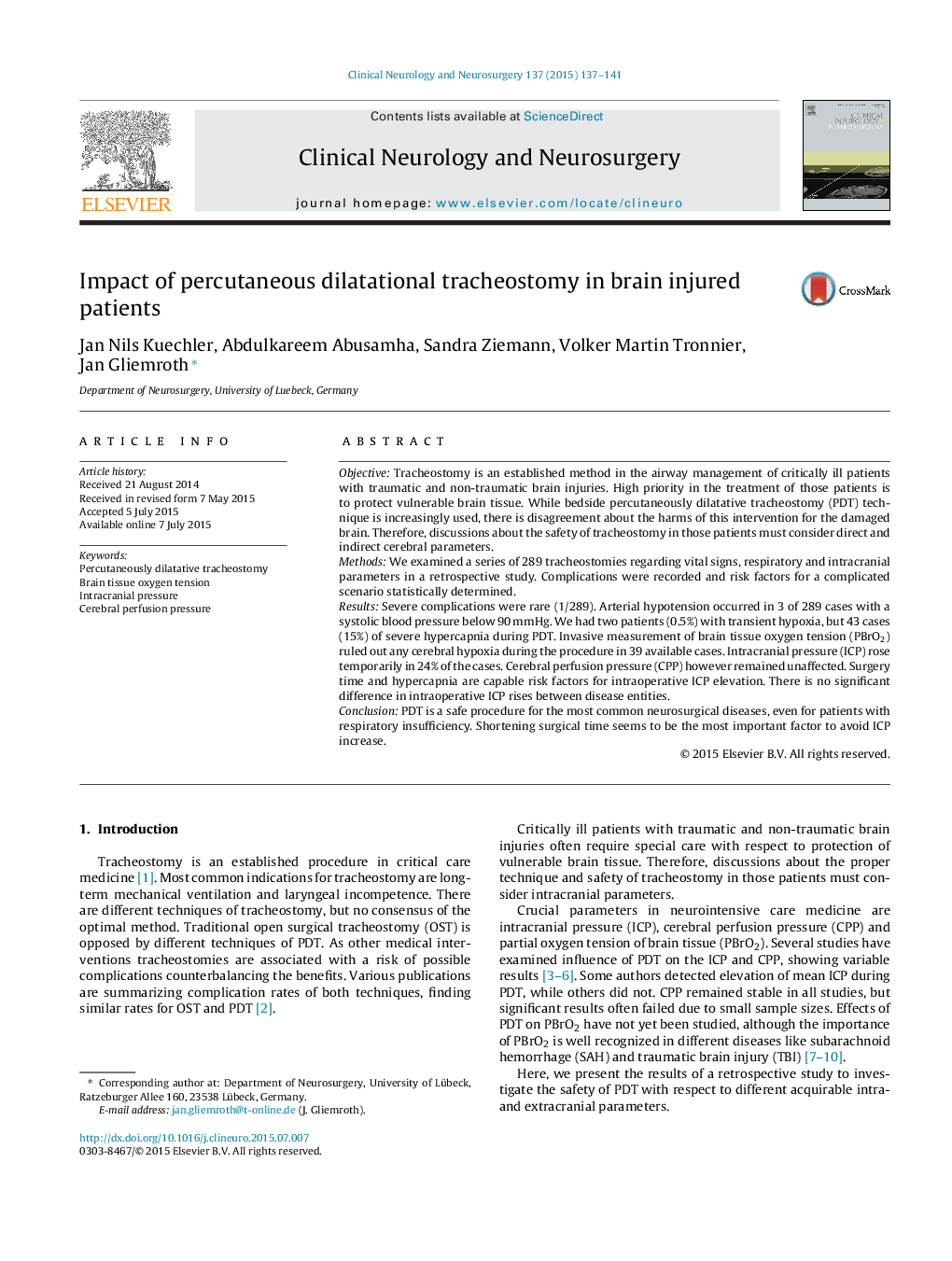| کد مقاله | کد نشریه | سال انتشار | مقاله انگلیسی | نسخه تمام متن |
|---|---|---|---|---|
| 3039703 | 1579685 | 2015 | 5 صفحه PDF | دانلود رایگان |
• We examined a large series of tracheostomies regarding vital signs, respiratory and intracranial parameters in a retrospective study.
• Measurement of brain tissue oxygen tension (PBrO2) ruled out cerebral hypoxia during tracheotomy.
• Surgery time and hypercapnia are capable risk factors for intraoperative ICP elevation.
• PDT is nevertheless a safe procedure for the most common neurosurgical diseases.
ObjectiveTracheostomy is an established method in the airway management of critically ill patients with traumatic and non-traumatic brain injuries. High priority in the treatment of those patients is to protect vulnerable brain tissue. While bedside percutaneously dilatative tracheostomy (PDT) technique is increasingly used, there is disagreement about the harms of this intervention for the damaged brain. Therefore, discussions about the safety of tracheostomy in those patients must consider direct and indirect cerebral parameters.MethodsWe examined a series of 289 tracheostomies regarding vital signs, respiratory and intracranial parameters in a retrospective study. Complications were recorded and risk factors for a complicated scenario statistically determined.ResultsSevere complications were rare (1/289). Arterial hypotension occurred in 3 of 289 cases with a systolic blood pressure below 90 mmHg. We had two patients (0.5%) with transient hypoxia, but 43 cases (15%) of severe hypercapnia during PDT. Invasive measurement of brain tissue oxygen tension (PBrO2) ruled out any cerebral hypoxia during the procedure in 39 available cases. Intracranial pressure (ICP) rose temporarily in 24% of the cases. Cerebral perfusion pressure (CPP) however remained unaffected. Surgery time and hypercapnia are capable risk factors for intraoperative ICP elevation. There is no significant difference in intraoperative ICP rises between disease entities.ConclusionPDT is a safe procedure for the most common neurosurgical diseases, even for patients with respiratory insufficiency. Shortening surgical time seems to be the most important factor to avoid ICP increase.
Journal: Clinical Neurology and Neurosurgery - Volume 137, October 2015, Pages 137–141
